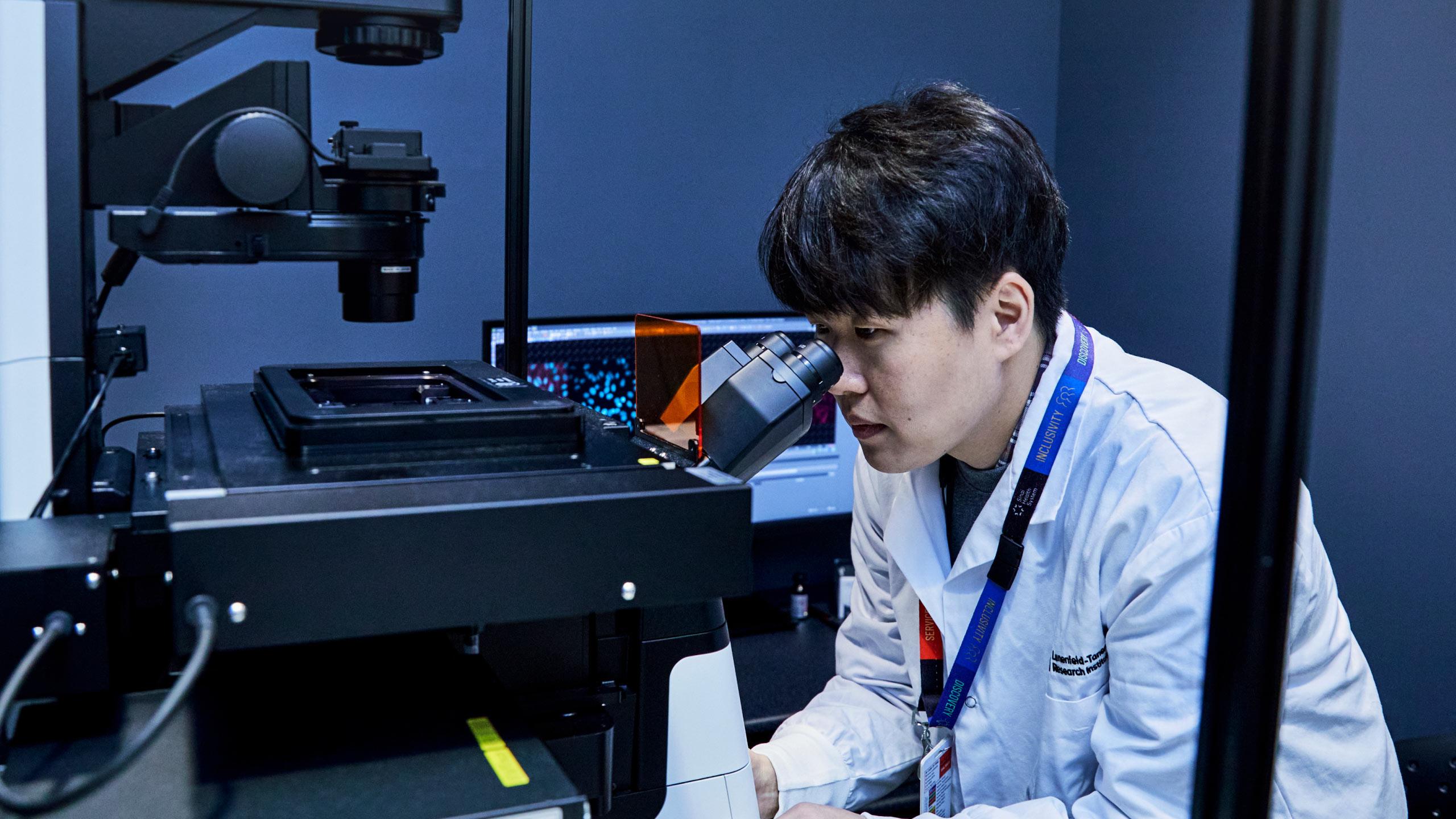Gynaecologic and Minimally Invasive Surgery
We treat gynaecologic conditions with a range of surgical options.
What we do
Some gynaecological conditions are treated surgically. Our Gynaecology team will discuss your options with you and help you decide on a treatment plan that is specific to your needs.
Gynaecological surgeons at Mount Sinai Hospital use a variety of different methods to perform procedures and surgeries including the following.
Surgical methods
Hysteroscopy
Hysteroscopy is a minimally invasive procedure that allows a gynaecologist to examine the inside of the uterus in order to diagnose or treat a variety of conditions.
Depending on your specific needs, the procedure may be done using local, regional or general anesthesia. It can often be performed in our medical office without sedation.
A thin tube called a hysteroscope is inserted through your vagina and into your uterus. A hysteroscope contains a small camera, a light and a surgical instrument. Images from the camera are shown on a screen so your gynaecologist can see inside your uterus. Often, the instrument can be used to perform minor procedures at the same time.
Hysteroscopy is used to diagnose or treat a variety of conditions including endometrial polyps and submucosal fibroids.
Laparoscopy
Laparoscopy is a minimally invasive surgical procedure that allows a surgeon to access the abdomen or pelvis through small incisions.
The procedure has a shorter recovery period than traditional open surgery (laparotomy). You are usually able to go home on the same day.
You will be put to sleep under general anesthesia for this procedure. Then a thin tube containing a camera is inserted through a small incision near your belly button or just below your rib cage. The camera sends images to a screen so your surgeon can see the inside of your abdomen and pelvis. Surgical instruments are inserted through fingernail-sized incisions to perform the procedure.
Laparoscopy is used for a variety of procedures, including surgery for endometriosis, fibroids, ovarian cysts, removing fallopian tubes/ovaries, and to remove the uterus.
Laparotomy
Laparotomy is an open surgical procedure that allows a surgeon to access your abdomen or pelvis through an incision that is similar to those used in Caesarean sections. The procedures is done under a general anesthesia, and requires a hospital stay and a longer recovery time compared to minimally invasive procedures.
Laparotomy may be recommended when minimally invasive surgery is not possible or for other reasons. Laparotomy is used to perform a variety of procedures, including myomectomy (fibroid surgery), hysterectomy (removal of the uterus) and surgery to treat advanced endometriosis.
Robotic surgery
Robotic surgery is another type of laparoscopic surgery that uses a robotic device. It is used for specific types of procedures, such as reconstructive surgeries, or to treat complex health or pelvic disorders like high BMI.
You will be put to sleep under general anesthesia. Compared to traditional open surgery (laparotomy) robotic surgery has a shorter recovery period.
During robotic surgery, small robotic instruments and a camera are inserted through small incisions in your abdomen. The camera sends images to a screen, allowing a surgeon to see inside your abdomen and pelvis. The surgeon can control the robotic instruments and perform complex procedures with precision.
Robotic surgery may be used to remove fibroids, for some hysterectomies or to perform other gynecologic procedures.
Types of surgery
Endometriosis surgery
Surgery for endometriosis can provide temporary relief from symptoms or help with fertility.
Laparoscopy is the most common method of surgery for endometriosis. During the procedure, a surgeon will access your abdomen and pelvis using small incisions and remove the endometrial tissue that is growing outside of the uterus.
Surgery cannot cure your endometriosis, but it is often very helpful.
Medical treatment may be needed to continue to manage your endometriosis after surgery.
Myomectomy
Myomectomy is surgery to remove uterine fibroids. It is often recommended if you want to preserve your fertility.
Depending on your symptoms and the size and location of your fibroids, different methods of removal may be recommended.
Smaller fibroids can be removed using minimally invasive methods such as hysteroscopy, laparoscopy and robotic surgery. An open surgery (laparotomy) may be required in certain circumstances.
Hysterectomy
Hysterectomy is the surgical removal of the uterus.
Hysterectomy may be recommended as the primary treatment for some conditions, or when medication or other treatments have not been effective.
A hysterectomy can treat a variety of conditions including adenomyosis, fibroids, endometriosis or cancer.
There are several different types of hysterectomy. Our surgical team will discuss the risks and benefits of the different types and help you decide which is best for your specific needs.
Most of the time, the cervix is removed along with the uterus. However, there are specific situations when the cervix is preserved.
Depending on your specific needs, the ovaries and fallopian tubes may be preserved or may be removed along with the uterus. If you are premenopausal and have your ovaries removed, it will bring on menopause.
Hysterectomy can be performed using different methods. Our surgical team will consider your individual condition and surgical history when recommending a method.
Sometimes, the uterus can be removed through the vagina without the need for any external incisions. In other cases, we may recommend a laparoscopy or open surgery (laparotomy).
Pelvic nerve (neuropelveology) surgery
Pelvic nerve surgery is a specialized procedure used to provide relief from symptoms caused by conditions that involve pelvic nerves.
These conditions include advanced endometriosis, compressed pelvic nerves, benign nervous system tumours called schwannoma and others.
Mount Sinai Hospital is the only hospital in Canada specializing in this type of surgery.
Our surgeon uses a minimally invasive method called laparoscopy to access and treat the nerves in the pelvis through small incisions.








